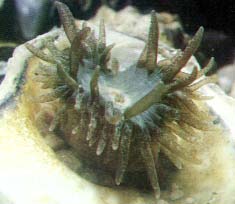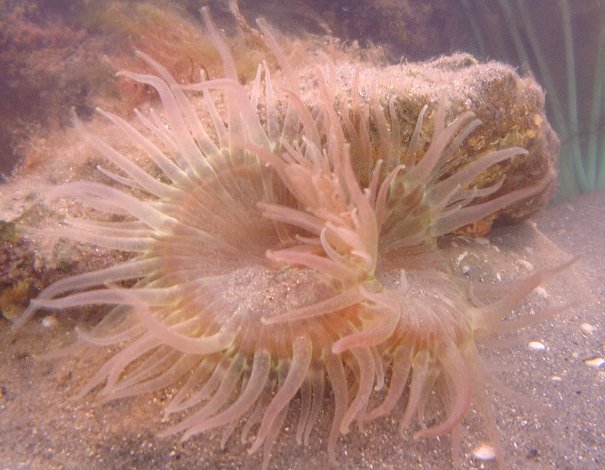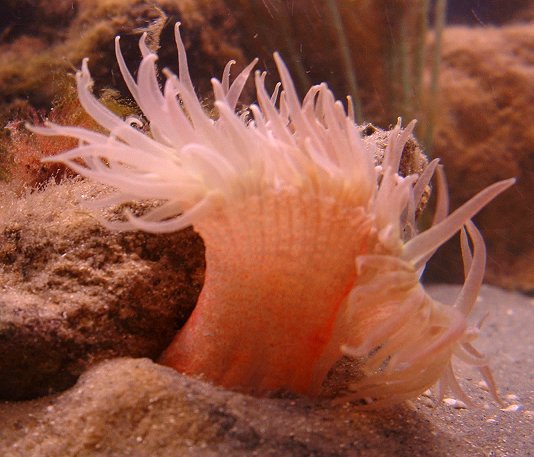|
Marine Life Study Society |
| GENERAL
Sea Anemones |
| Movement |
| Feeding |
| Predators |
| Diagram |
| DataBase |
|
|
| Placozoa |
| Porifera |
| Cnidaria |
| Ctenophora |
| Mesozoa |
| Platyhelminthes |
| Nemertina |
| Gnathostomulida |
| Gastrotricha |
| Rotifera |
| Kinorhyncha |
| Loricifera |
| Acanthocephala |
| Entoprocta |
| Nematoda |
| Nematomorpha |
| Ectoprocta |
| Phoronida |
| Brachiopoda |
| Mollusca |
| Priapulida |
| Sipuncula |
| Echiura |
| Annelida |
| Tardigrada |
| Pentastoma |
| Onychophora |
| Arthropoda |
| Pogonophora |
| Echinodermata |
| Chaetognatha |
| Hemichordata |
| Chordata |
| CNIDARIA |
|
|
Pimplet
Anemone
 |
Common Name(s):
Red-speckled Pimplet Anemone Scientific Name: Anthopleura ballii Family: Usual Size: cm |
| Identification:
Brown acrorhagi (beads).
Information provided by Vicki
Pearse (President, American Microscopical
Society)
on the Cnidarian Newsgroup. 
MARLIN
Information page for this sea anemone (Link)
Breeding: Sexual, sperm and eggs discharged into the sea. Habitat:
Range: South & west of the British Isles. Mediterranean and the Atlantic coasts of Portugal, France, Spain. Most easterly point found on the northern coast of the English Channel, is Worthing, Sussex, where it has been recorded on a handful of occasions (by Andy Horton). Additional Notes: This anemone is unable to retract its tentacles. (Red-speckled) Pimplet Anemone Link Pimplet Anemone,
Anthopleura
ballii
This
splendid study of the Pimplet Anemone
was taken near the wreck of the Colussus,
off Samson
Island, Isle
of Scillies
Reports: 30
March 2002
Information wanted: Please send any records of this sea anemone,
with location, date, who discovered it, how it was identified, prevalence,
common name and any other details to:
|
| FIVE KINGDOMS TAXONOMIC INDEX TO BRITISH MARINE WILDLIFE |
|
|
|
News 2018 |
Membership Form |
|
 Food:
Food:

